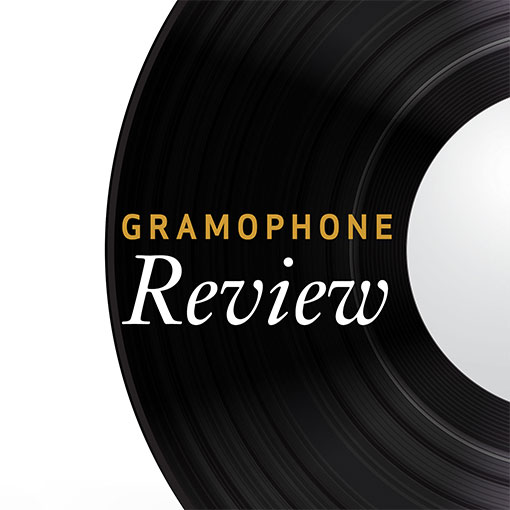Classical Trumpet Concertos
View record and artist detailsRecord and Artist Details
Composer or Director: Johann Baptist Georg Neruda, Johann Nepomuk Hummel, Frederick Dionysus Weber, Carl Friedrich Christian Fasch, Joseph Haydn
Label: Nimbus
Magazine Review Date: 2/1995
Media Format: CD or Download
Media Runtime: 75
Catalogue Number: NI7016

Tracks:
| Composition | Artist Credit |
|---|---|
| Concerto for Trumpet and Orchestra |
Joseph Haydn, Composer
Christopher Warren-Green, Conductor John Wallace, Trumpet Joseph Haydn, Composer Philharmonia Orchestra |
| Concerto for Trumpet and Strings |
Johann Baptist Georg Neruda, Composer
Christopher Warren-Green, Conductor Johann Baptist Georg Neruda, Composer John Wallace, Trumpet Philharmonia Orchestra |
| Variations |
Frederick Dionysus Weber, Composer
Christopher Warren-Green, Conductor Frederick Dionysus Weber, Composer John Wallace, Trumpet Philharmonia Orchestra |
| Concerto for Trumpet, Oboe d'amore, Violin and Str |
Carl Friedrich Christian Fasch, Composer
Carl Friedrich Christian Fasch, Composer John Anderson, Oboe d amore John Wallace, Trumpet Peter Thomas, Violin Philharmonia Orchestra Simon Wright, Conductor |
Author: Jonathan Freeman-Attwood
This generous re-release of classical trumpet pieces, original and arranged, is taken from a number of Nimbus recordings featuring John Wallace as soloist. The famous Haydn Concerto sounds as bright and forthright now as it did in 1984 with trumpeter and orchestra freshly caught in the spacious Church of All Saints, Tooting. Wallace's technical strength and impish articulation are characterized by crisp tonguing and a strident (if at times fairly uncompromising) trumpet sound in the outer movements. The virtuosic if slightly maverick cadenza is accompanied by a full complement of gleaming South London Y reg. vehicles, but peace is restored in a beautifully judged slow movement in which Wallace floats rather than imposes. Less refined than Antonsen or Hardenberger's recordings (track 2 at 3'43'' has an extraordinary blemish in the lower register of the strings), there is a natural freshness here which one rarely hears in this old war-horse. The Neruda Concerto, written originally for the corno da caccia, makes an attractive trumpet piece, flawed only by its unbalanced episodic structure, but trumpeters can't afford to be too fussy.
Anton Weidinger, the trumpet virtuoso for whom Haydn wrote his concerto, was lucky enough to find another composer willing to compose for his new-fangled chromatic trumpet. Hummel's Concerto is a persuasive work, by and large, and it is given a bold reading here by Wallace, full of incident, some examples of which trip out of the bell in a fairly conventional manner. Others are decidedly quirky, such as the mock antiquated tuning on the opening trill of the second movement. Rather more effective are the dazzling embellishments which look forward to the salon and the new virtuoso tradition of the nineteenth century which the trumpet inhabited once valves had been invented.
Friedrich Dionysius Weber's Variations in F are typical of this musically slight but entertaining world in which the cornet/trumpet was beginning to thrive. Wallace is utterly at home in this idiom bringing to the music the swagger and facility upon which its characterization depends Finally we step back to the Indian summer of the trumpet, the early classical years and the stratospherically high trumpet range demanded by Carl Friedrich Christian Fasch. His Concerto for trumpet, oboe d'amore and violin is an exciting work, brilliantly played (I cannot really believe it is by Johann Friedrich, Carl Friedrich Christian's father, as the author of the note suggests). Recorded two years after the other pieces here, this performance perhaps most clearly reflects Wallace's current profile as an eminent trumpet soloist.'
Anton Weidinger, the trumpet virtuoso for whom Haydn wrote his concerto, was lucky enough to find another composer willing to compose for his new-fangled chromatic trumpet. Hummel's Concerto is a persuasive work, by and large, and it is given a bold reading here by Wallace, full of incident, some examples of which trip out of the bell in a fairly conventional manner. Others are decidedly quirky, such as the mock antiquated tuning on the opening trill of the second movement. Rather more effective are the dazzling embellishments which look forward to the salon and the new virtuoso tradition of the nineteenth century which the trumpet inhabited once valves had been invented.
Friedrich Dionysius Weber's Variations in F are typical of this musically slight but entertaining world in which the cornet/trumpet was beginning to thrive. Wallace is utterly at home in this idiom bringing to the music the swagger and facility upon which its characterization depends Finally we step back to the Indian summer of the trumpet, the early classical years and the stratospherically high trumpet range demanded by Carl Friedrich Christian Fasch. His Concerto for trumpet, oboe d'amore and violin is an exciting work, brilliantly played (I cannot really believe it is by Johann Friedrich, Carl Friedrich Christian's father, as the author of the note suggests). Recorded two years after the other pieces here, this performance perhaps most clearly reflects Wallace's current profile as an eminent trumpet soloist.'
Discover the world's largest classical music catalogue with Presto Music.

Gramophone Digital Club
- Digital Edition
- Digital Archive
- Reviews Database
- Full website access
From £8.75 / month
Subscribe
Gramophone Full Club
- Print Edition
- Digital Edition
- Digital Archive
- Reviews Database
- Full website access
From £11.00 / month
Subscribe
If you are a library, university or other organisation that would be interested in an institutional subscription to Gramophone please click here for further information.





